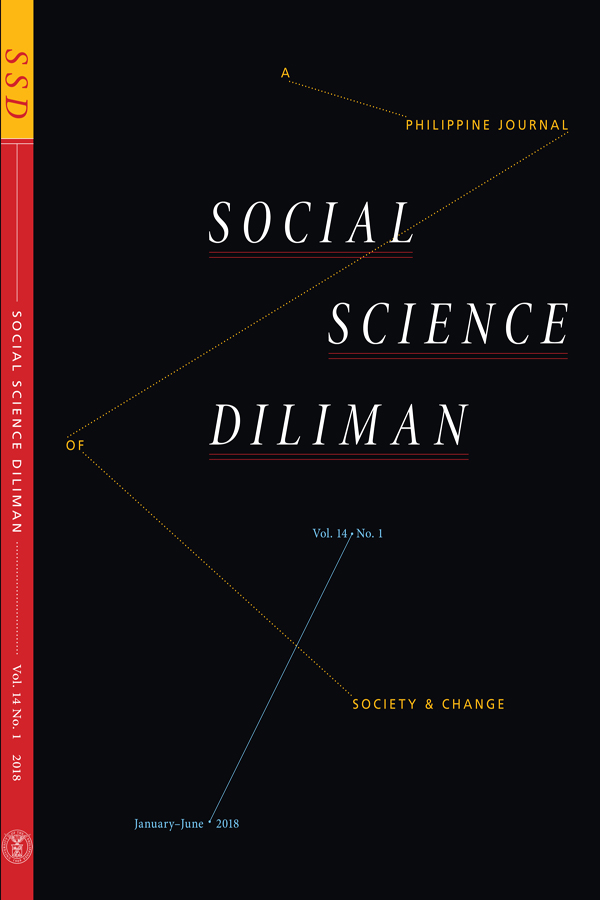Pagsusuri sa ortograpiya ng kambal-katinig sa Filipino batay sa korpus <br>(A corpus-based analysis of consonant clusters in Filipino orthography)
Abstract
ABSTRAK
Kaakibat ng binubuong UP Monolingguwal na Diksiyonaryong Filipino (UP MDF) ang pangangalap ng korpus ng wikang Filipino kapwa sa anyong pasalita at pasulat. Ang naturang korpus ang magsisilbing batayan sa pagpili ng mga salitang bubuo sa leksikograpikong akda, maging sa paglalarawan ng gramatika ng kontemporaryong gamit ng wikang pambansa. Pagtutuunan ng pansin ang pamamaraang ortograpiko ng mga pasulat na tekstong nakapaloob sa pasulat na korpus ng Filipino, partikular ang pagkakabit ng reduplicative affix C1(C2)V1- at ang pagbaybay ng mga salitang may at . Ihahambing ito sa mga pamantayang ipinatutupad ng Komisyon sa Wikang Filipino (KWF), na siyang pangunahing nagtatakda sa magiging anyo ng mga hiniram na salita patungong Filipino. Batay sa datos na nakalap, lumilitaw na bagaman may tiyak na tuntuning ipinatutupad ang KWF hinggil sa usapin ng pagbabaybay ng mga hiram na salita, makikita pa rin ang pagtaliwas dito kahit sa mga tekstong nailimbag na pambansa ang lawak ng sirkulasyon. Hindi maaaring isantabi ang mga kataliwasang ito sapagkat nilalayon ng UP MDF na ilarawan ang Filipino ayon sa mismong paggamit ng mga tagapagsalita nito sa kontemporaryong panahon, kung kaya, ang mga anyong may iba’t ibang paraan ng pagbaybay ay itinuturing na mga variant. Ang mga variant na may mataas na bilang ang gagamitin sa diksiyonaryo. Magkagayunpaman, kinakailangan pa ring isaalang-alang ang mga tuntunin ng KWF sa layuning makabuo ng batayan ang ortograpiyang Filipino, kung kaya inaasahan na ang diskurso hinggil sa paksang ito ay mananatili at magpapatuloy.
MGA SUSING-SALITA: leksikograpiyang Filipino, korpus ng wikang Filipino, ortograpiya, hiram na salita, linggwistiks batay sa corpus
ABSTRACT
The UP Monolingguwal na Diksiyonaryong Filipino [UP Monolingual Filipino Dictionary] (UP MDF) is currently compiling a Filipino language corpus in written and spoken forms. This corpus will be the basis of words that will be chosen as part of the lexicographic work, as well as the description of the grammatical structure of the contemporary use of the national language. This paper focuses on the orthographic systems of the published texts included in the written corpus of Filipino, particularly the forms that are derived using the reduplicative affix C1(C2)V1- and the spelling or respelling of forms with and . The results of the description of these orthographic processes are compared with the standardization rules of the Komisyon sa Wikang Filipino [Commission on the Filipino Language] (KWF), the primary state language agency that assigns the written forms of borrowed terms in Filipino. From the data collected, it appears that while the KWF has already come up with definitive rules with regard to the spelling of borrowed lexical items, there have been a number of instances that these rules have been disregarded as seen from the materials that were published for national circulation and were used for the Filipino language corpus. These forms that deviate from the KWF rules, however, cannot be dismissed since the goal of the UP MDF is to describe the current use of Filipino by its speakers, hence, the forms that are spelled differently are considered variants and the word with the higher frequency count becomes the primary entry in the dictionary. Neverthless, there should be a consideration of the orthographic rules implemented by the KWF as a means of standardization such that discussions on the matter are expected to continue.
KEYWORDS: Filipino lexicography, Filipino language corpus, orthography, lexical borrowing, corpus linguistics
(A corpus-based analysis of consonant clusters in Filipino orthography). Social Science Diliman: A Philippine Journal of Society and Change, [S.l.], v. 14, n. 1, june 2018. ISSN 2012-0796. Available at: <https://journals.upd.edu.ph/index.php/socialsciencediliman/article/view/6201>. Date accessed: 31 aug. 2025.


